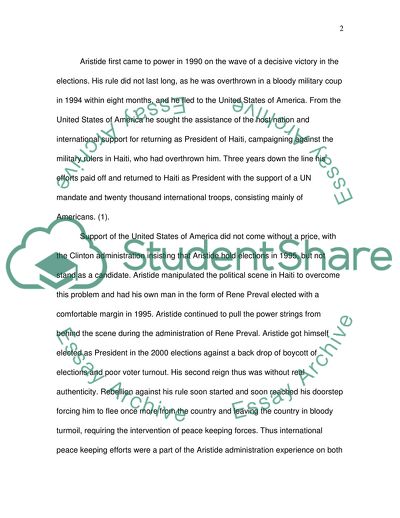Cite this document
(The Peace Making and Peace Enforcement Process in Haiti during the Coursework, n.d.)
The Peace Making and Peace Enforcement Process in Haiti during the Coursework. https://studentshare.org/history/1715481-the-peacemaking-ad-peace-enforcement-process-in-haiti-during-the-aristride-administrations-rule
The Peace Making and Peace Enforcement Process in Haiti during the Coursework. https://studentshare.org/history/1715481-the-peacemaking-ad-peace-enforcement-process-in-haiti-during-the-aristride-administrations-rule
(The Peace Making and Peace Enforcement Process in Haiti During the Coursework)
The Peace Making and Peace Enforcement Process in Haiti During the Coursework. https://studentshare.org/history/1715481-the-peacemaking-ad-peace-enforcement-process-in-haiti-during-the-aristride-administrations-rule.
The Peace Making and Peace Enforcement Process in Haiti During the Coursework. https://studentshare.org/history/1715481-the-peacemaking-ad-peace-enforcement-process-in-haiti-during-the-aristride-administrations-rule.
“The Peace Making and Peace Enforcement Process in Haiti During the Coursework”. https://studentshare.org/history/1715481-the-peacemaking-ad-peace-enforcement-process-in-haiti-during-the-aristride-administrations-rule.


